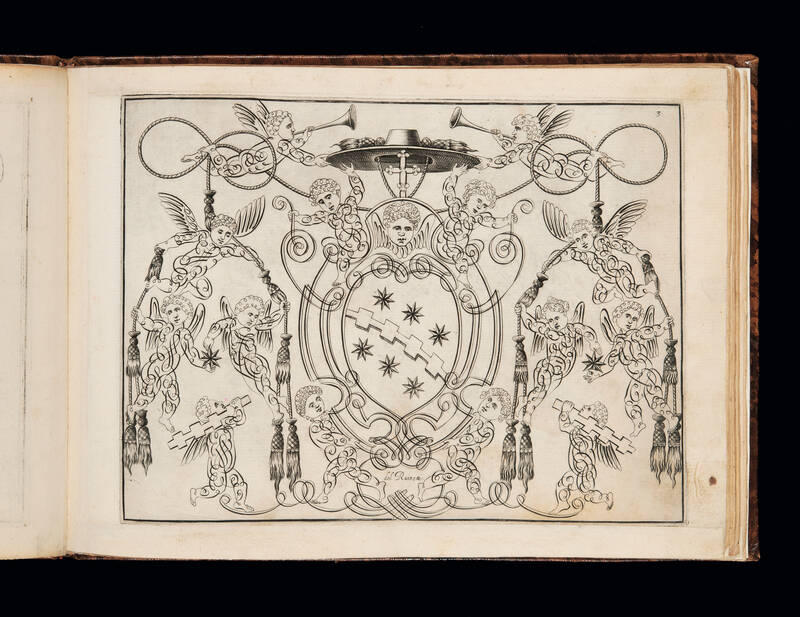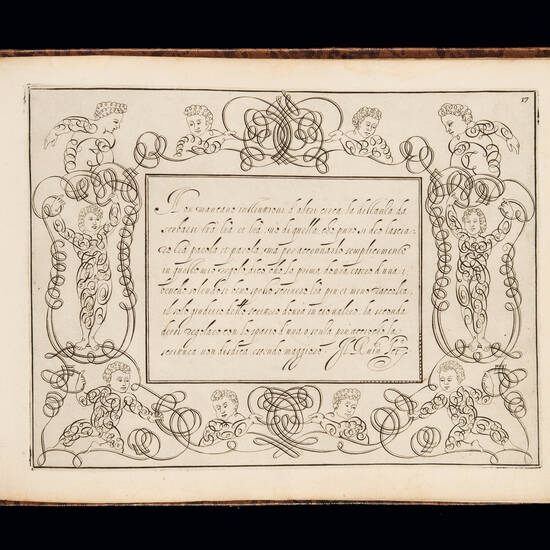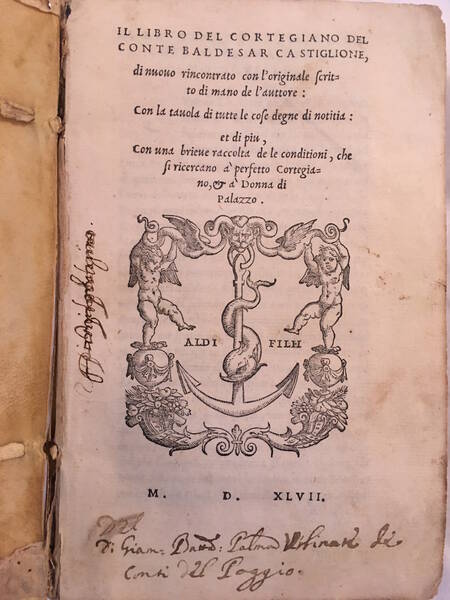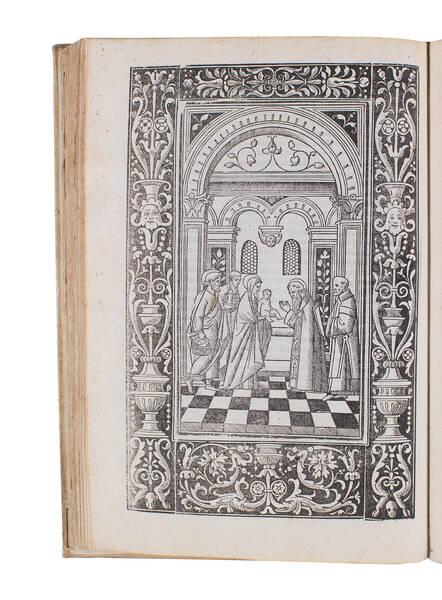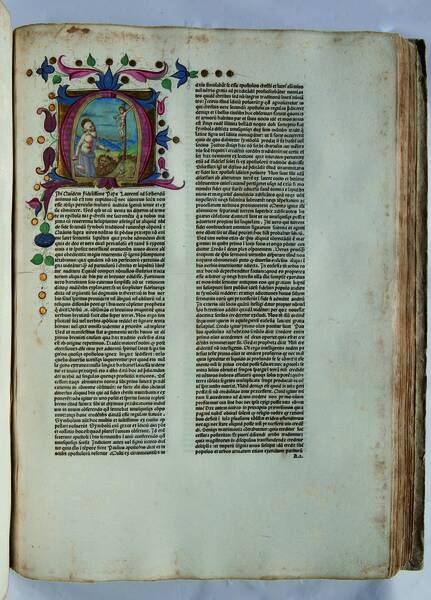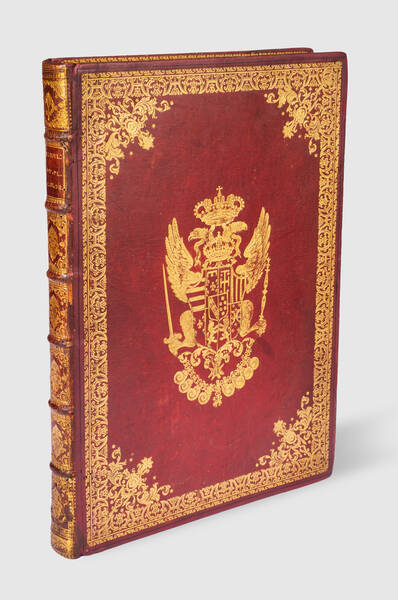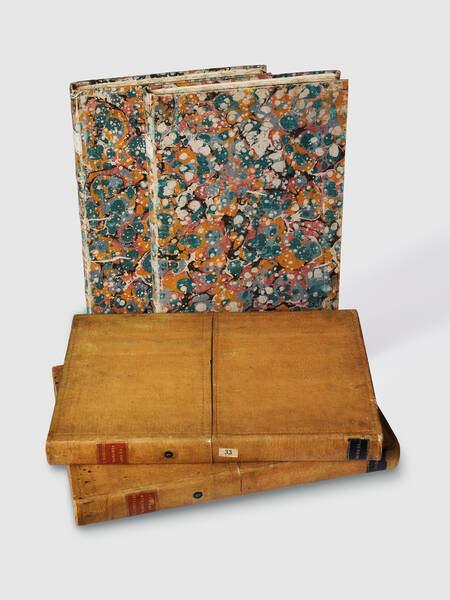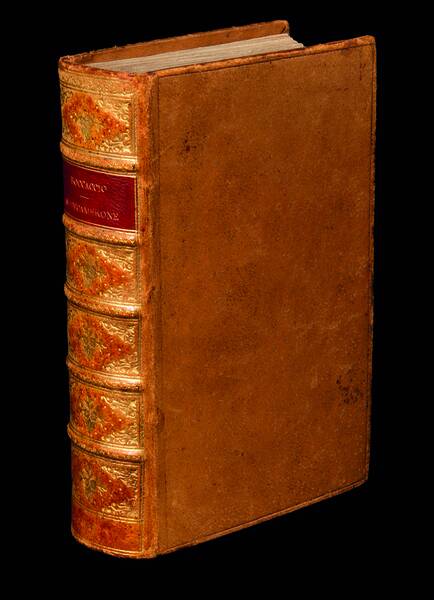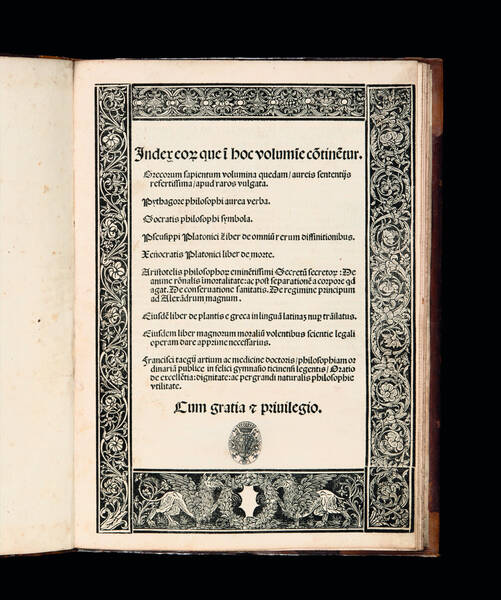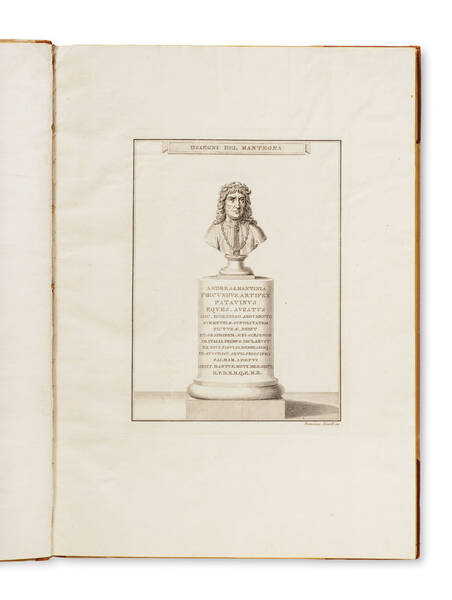RUINETTI, Tomaso. Idea del buon scrittore, opera prima di Tomaso Ruinetti da Ravena a’beneficio de’desiderosi d’imitare le vere forme dello scrivere.
Rome: intagliato da Cristoforo Blanco, Cristoforo Blanco., 1619.Olong quarto (230 x 320 mm.), 44 engraved plates including engraved title page, potrait of Tommaso Ruinetti and the dedication to Paolo V. A few restioration in the white margins, a few spots, overall a good copy bound in modern brown calf.
First edition of this rare calligraphic masterpiece. ‘Tomaso Ruinetti's Idea del buon scrittore, engraved on copper by Christoforo Blanco in 1619 and published in Rome, is a handsome book which displays the speedy chancery style espoused by Scalino – years earlier. The best piece of writing in the book is the privilege from Paul V. 22 November 1619, written in good conservative cancelleresca corsiva on Cresci's model. The dedication to Cardinal Aldobrandini is in cancelleresca corsiva corrente with flourishes but without loops.The ligature ‘ch' is used only occasionally. The layout is so excellent that it became a model for his followers. Ruinetti's formula was a command of hand border, enclosing a dedication or superscription to an eminent Cardinal, with fast writing of cancelleresca corsiva corrente. The fast writing examples are well exemplified in plate8, whereis shown but he does not become addicted to looping until plate 25, where occurs. His plate 31, Alfabeti del Ruinetti per la S'ra Fontanella exhibits three lines of capitals, swash and inscriptional, and three of lower case; six plates (32-38) provide a conservative cancelleresca corsiva (39), cancelleresca corsiva antica, a capital and a lower-case sloped roman; 40 an upright antica tonda, which is quite tolerable. T book ends with a suite of the Latin capitals in the Sixtus V style'. (S. Morrison, Early Italian writing books … Verona, 1990; pp.140-141)
'Ruinetti was the first of the writing masters to use copper-plate engraving to reproduce not only a variety of scripts (as Hercolani had been first to do in 1574) but also the very elaborate borders showing 'strikings' or 'command of hand'. These calligraphic flourishes already threaten to dominate the page, and later writing masters were to take up this aspect of the copy books with great enthusiasm and virtuosity'. (The Art of Calligraphy, 185.)
Bonacini 1585.
Other Books
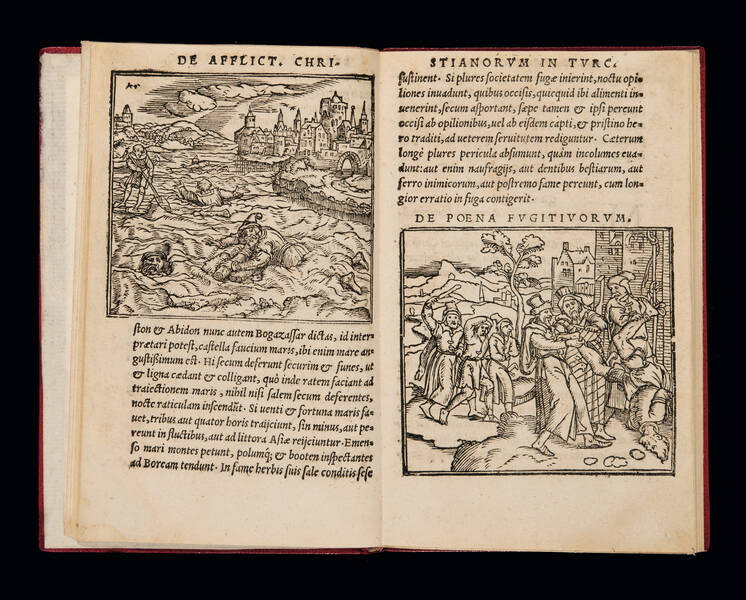
GEORGEVIC, Bartolomej
De afflictione, tam captivorum quam etiam sub Turcae tributo viventium christianorum.
SOLD OUT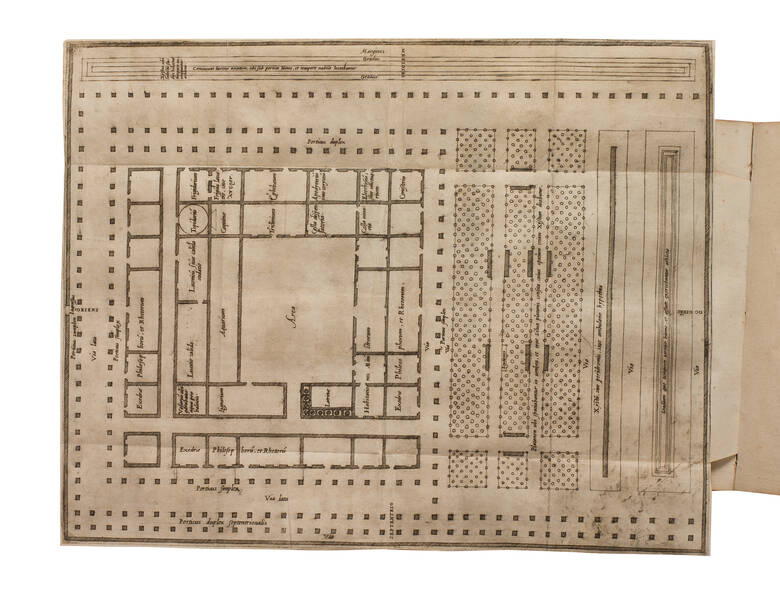
MERCURIALE, Girolamo
Artis gymnasticae apud antiquos celeberrimae, nostris temporibusignoratae, libri sex.
SOLD OUT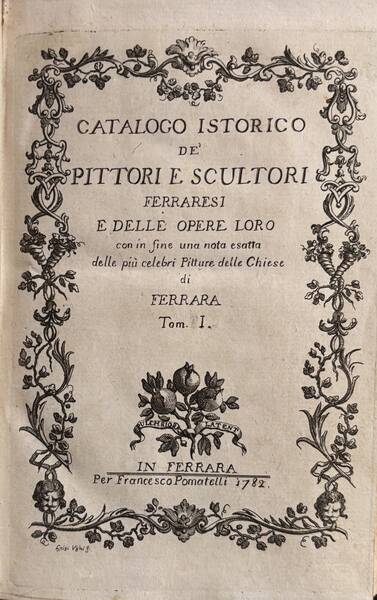
CITTADELLA, Cesare
Catalogo istorico de' pittori e scultori ferraresi e delle opere loro con in fine nota esatta delle più celebri pitture delle chiese di Ferrara.
€ 2.200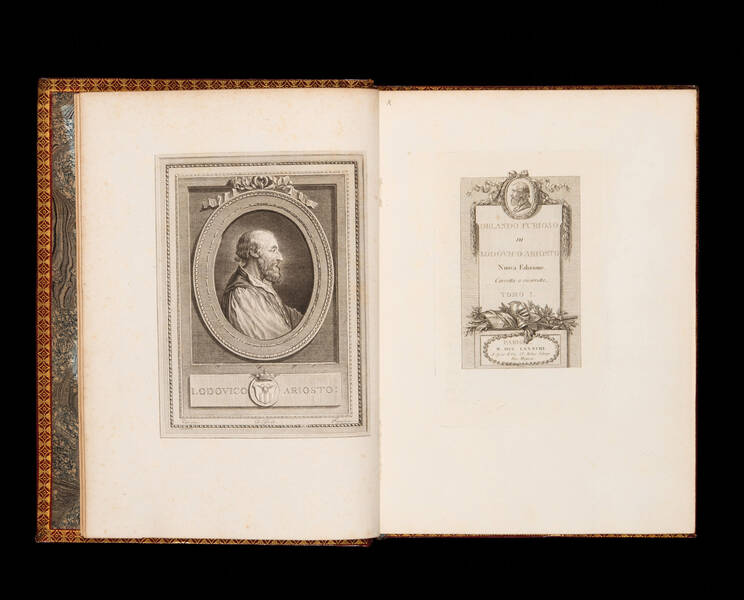
ARIOSTO, Ludovico
Orlando furioso di Ludovico Ariosto. Nuova Edizione Corretta e ricorretta.
€ 6.000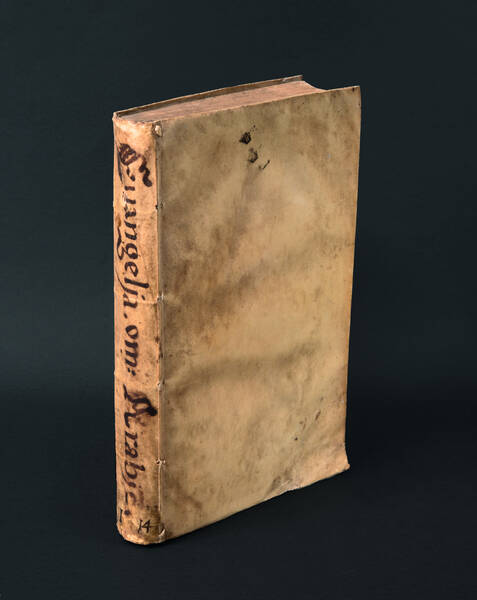
[BIBLIA ARABICA]
Evangelium Iesu Christi quemadmodum scripsit Mar Mattheus unus ex duodecim discipulis eius.
€ 11.000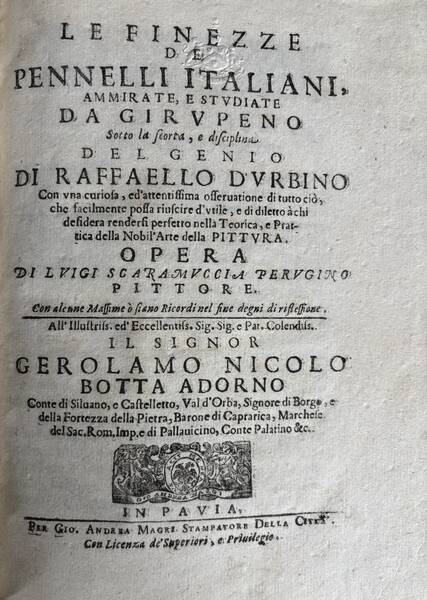
SCARAMUCCIA, Luigi
Le finezze de pennelli italiani, ammirate, e studiate da Girupeno sotto la scorta, e disciplina del genio di Raffaello d'Urbino : con una curiosa,...
€ 1.200![Azhār al-afkār fī ğawāhir al-ahğār by Ahmad ibn Yūsuf al-Tīfāšī […]Fior di pensieri sulle pietre preziose di Ahmed Teifascite, opera stampata nel suooriginale arabo, colla traduzione italiana appresso, e diverse note di AntonioRaineri Azhār al-afkār fī ğawāhir al-ahğār by Ahmad ibn Yūsuf al-Tīfāšī […]Fior di pensieri sulle pietre preziose di Ahmed Teifascite, opera stampata nel suooriginale arabo, colla traduzione italiana appresso, e diverse note di AntonioRaineri](https://www.medariquier.com/typo3temp/pics/4baf8d2ef4.jpg)
AHAMAD IBN YUSUF, al-Tayfãsî
Azhār al-afkār fī ğawāhir al-ahğār by Ahmad ibn Yūsuf al-Tīfāšī […] Fior di pensieri sulle pietre preziose di Ahmed Teifascite, opera stampata nel...
SOLD OUT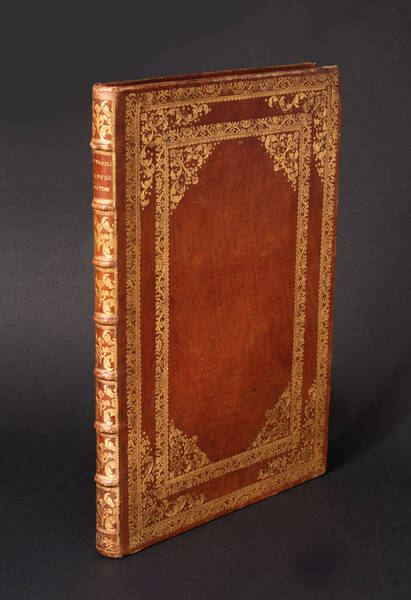
BERRETTINI DA CORTONA PIETRO
Tabulae Anatomicae a celeberrimo pictore Petro Berrettino Cortonensi delineatae, & amp; egregiè aeri incisae nunc primum produent, et a Cajetano...
SOLD OUT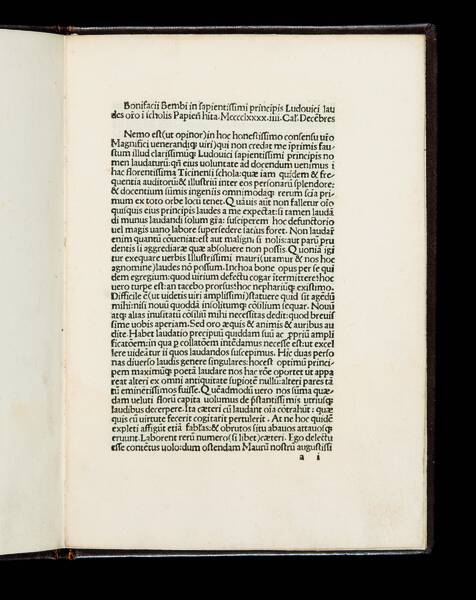
BEMBO, Bonifacio
In sapientissimi principis Ludovici laudes or(ati)o i(n) scholis Papien(sibus) h(ab)ita.
SOLD OUTMEDA RIQUIER rare books ltd.
4 Bury Street St James's
SW1Y 6AB London
Phone +44 (0) 7770457377
info@medariquier.com
